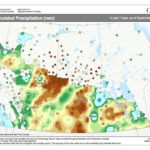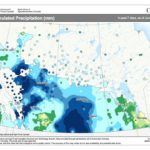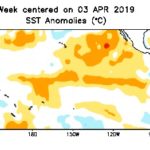MarketsFarm — Canada’s Prairies should see higher-than-normal precipitation and generally average temperatures during the 2020 growing season, according to a forecast from Scott Kehler of Weatherlogics. Speaking Thursday at CropConnect in Winnipeg, Kehler said “there’s not really a strong pattern one way or the other” when it comes to the temperature outlook. The Weatherlogics forecast













